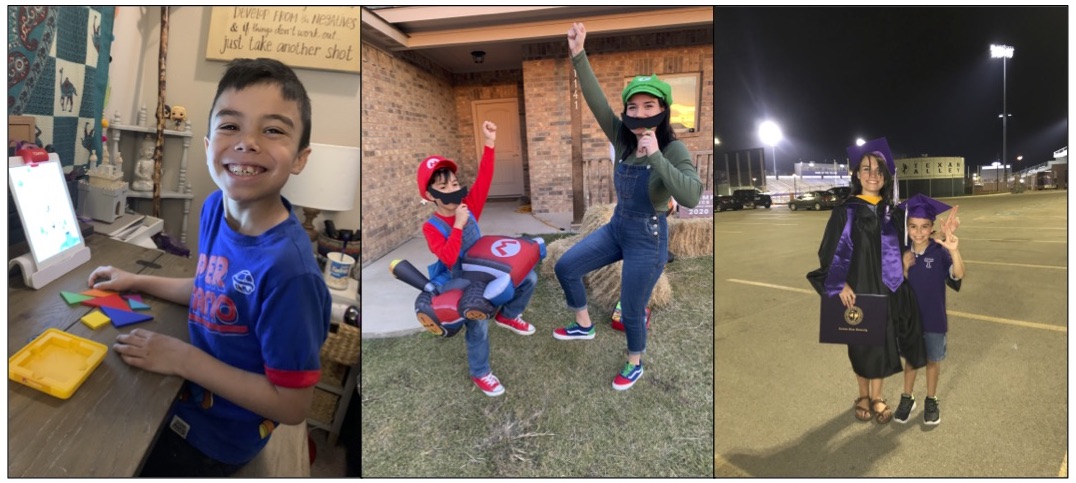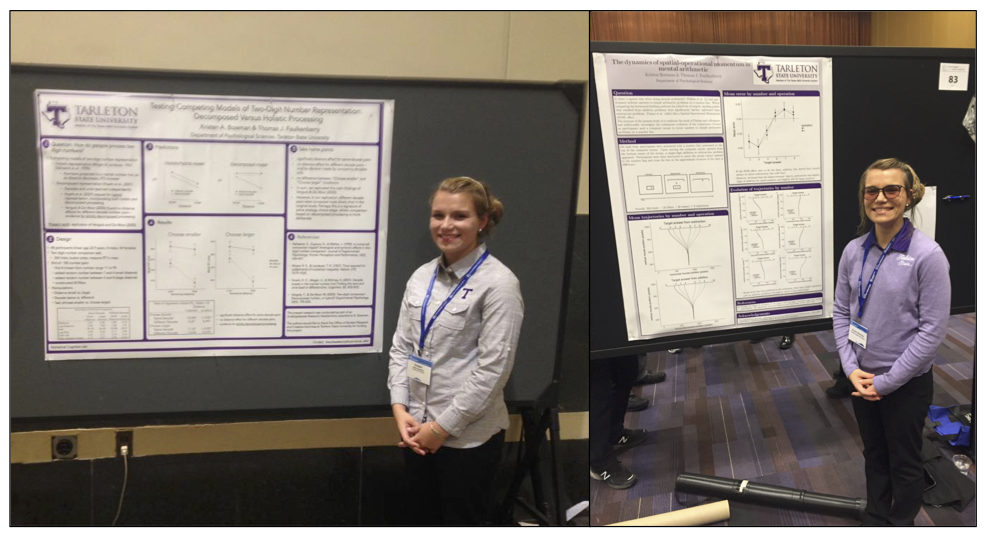With less than one week until the 61st Annual Meeting of the Psychonomic Society, the excitement continues to build. Be sure that you register before the deadline of November 16, 2020. Also, be sure to follow us @Psychonomic_Soc and use the #psynom20 during the Meeting to get updates on the fly.
We are at our seventh and final Twitternome interview! Our previous interview was with Raunak Pillai, and here we introduce you to Twitternome and Ph.D. student, Kristen Bowman (pictured below and you can follow her on Twitter @krisbow27).

Kristen is in the 1st year of her Ph.D. program in Educational Psychology at Texas A&M Commerce. She earned her Bachelor’s and Master’s degrees from Tarleton State University, where she currently teaches as an Adjunct Instructor. We are fortunate to have had Kristin’s as one of our Twitternomes for the third year in a row. Thanks, Kristin; we’re excited to have you back!
Kristen’s research interest is in numerical cognition. She has been investigating latent processes in the size-congruity task by modeling response time data. To learn more about this research, you should visit her poster (details below).
Without further ado, we present our interview with Kristen Bowman.
How has your work life changed as a result of the pandemic?
The main change the pandemic has implemented in my work life was the transition from face to face teaching to online learning. This transition was tough because I mainly teach general psychology, and the students are generally first-year students. One of the main reasons that I love teaching this course is because of their excitement for learning. They are generally brand new into their program, so I get to be more than an instructor. I also get to be a source for general college life information, a resource for opportunities on campus, and a guide to their love of college.
While my courses are not easy, it is a pure joy to work with the students and impact their education. Yet, I have found that building connections with students online is much more complicated than in face to face courses. In efforts to bond with the students, I now offer weekly meetings to chat online, videos for them to watch, and workshops for major assignments. I am continually having meetings with students to aid in their learning. Overall, the pandemic made me learn how to be more creative and proactive at engaging with students.
Has the pandemic caused you to rethink your career path?
Absolutely! Students were distraught when we moved to online learning because they genuinely want to learn. When we moved online, most students expected that the work for their courses would end too. I explained many times that the semester was only halfway over, and there was much more to learn.
Luckily, the second portion of the course is my favorite to teach. I tried to use my enthusiasm and joy for learning to encourage them to learn as well. All in all, I think it turned out okay. There is a silver lining to the pandemic because it forced us to take a step back from our day to day lives and reassess. I now feel a drive stronger than ever to succeed and learn as much as possible. My career path is still the same as before, but I am far more experienced as a student, instructor, and person.
Has anything beneficial come out of the pandemic for you? Either for your research or personal life, or both?
The main benefit was the time at home. I have an eight-year-old son who was thrilled that he got to be at home. The time that we spent together was great for our bonding. It was fun to get to work with him on his schoolwork because educational psychology is the area of my degree. I now have more firsthand experience going over worksheets, explaining concepts, and seeing just how smart my son is. I am very proud.
One of the main things I learned is that students hate worksheets. This lesson was good for me because it challenged how I work with my students, which consisted of weekly activities that were worksheets. I have now changed up what I do with my students, and I can see the difference.
What inspired you to get involved with the Psychonomic Society and serve as a Twitternome?
I have been a member of the Psychonomic Society since 2016, and it is by far my favorite conference of the year. The rich academic environment always gives me motivation and ideas for my future projects. I believe I saw an email where we could sign up to be a Twitternome, and I was just wondering about how I could be more involved.
Through my experience as a Twitternome, I have had the wonderful experience of getting to know many different individuals in the Psychonomic Society. Many of them greatly influenced the completion of my thesis project. Additionally, I love that I am responsible for attending talks and sharing information because there are many wonderful talks at Psychonomics. It’s hard to keep up!
What about the Annual Meeting are you most looking forward to?
My absolute favorite part of the Annual Meetings is the Women in Cognitive Science gathering. Every year I walk away from this meeting feeling empowered and understood. I love this part of the conference because I learn from experts in the field about their personal experiences and how they have worked through them. This is an excellent meeting because the goal is not to put anyone down but to educate others on being a strong female voice in a male-dominated career. I am so honored to get to be a part of such a powerful organization. As for the talks, I am looking forward to the talks by Henry Roediger and Kathleen McDermott because we were just learning about their work in my Graduate Cognition course. I am excited to get to see them both speak because I hear it is a real treat.
Yes, I am presenting. I am poster number 2102, and I will be covering my thesis work titled ‘Response time modeling for the size-congruity effect: early versus late interaction.’ I will give this presentation on Friday between 4:00 p.m. and 6:00 pm. I hope to see you there!
Here’s Kristen’s abstract:
Response Time Modeling for the Size Congruity Effect: Early vs. Late Interaction. KRISTEN BOWMAN and THOMAS FAULKENBERRY, Tarleton State University (Sponsored by Thomas Faulkenberry)
The size-congruity effect (SCE) occurs when numerical magnitude interferes with judgments of physical size. This interference is either occurs in the encoding-related or decision-related stages. To discriminate between these accounts, we used a class of mathematical models (ex-Wald, shifted Wald & EZ-Diffusion) to index the underlying cognitive processes via estimates of drift rate, response threshold, and nondecision time. We manipulated congruity in a single-digit physical comparison task and measured RTs. First, we found that congruent trials were processed faster than incongruent trials, which is indicative of the SCE. Next, via the mathematical models, we found that the drift rate for incongruent trials was smaller than for congruent trials, indicating that incongruent trials had a faster rate of information uptake. The response threshold for incongruent trials was larger than for congruent trials, indicating that for incongruent trials more information needed to be accumulated before responding. Critically, there was no difference for nondecision time between trial type. This combination of results provide support for a late interaction account of the SCE, which sheds light onto decision-related models of number processing.


